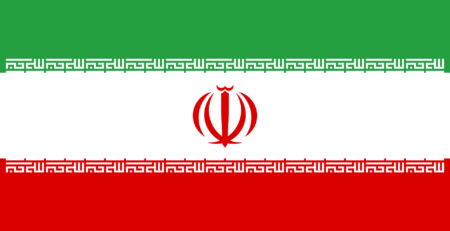China-US: Trade peace or rules of engagement?
The world entered 2020 in financial euphoria, on the back of the trade agreement between China and the United States, after more than a year of advances and setbacks – sometimes frantically advertised firsthand through social networks – which had caused much uncertainty in economic and political terms. And if this initial agreement may become a guide for future talks, a sort of rules of engagement to reach an agreement, it could also be just a breather, as China attempts to contain the spiral of tariff imposition, and the United States is satisfied to obtain higher import shares from the Asian giant, especially in the agricultural segment, and more guarantees regarding intellectual property rights. In any case, it appears that the deal was designed so that the United States can stabilize relations in a year that will be marked by presidential elections.
In this delicate balancing act that represents this first agreement, the debate on how sustainable it really is takes central stage. One thing seems certain – the fundamental roots behind this deadlock between China and the United States run deep and are far from an easy resolution.
Technological leadership is the real “battlefield”
The fundamental issues behind the rift are the intellectual property chapter and the rounds of negotiations needed to reach a second stage of trade agreement.
Some observers anticipate that there will be no agenda before the North American elections, which will take place in early November. However, some progress has been made, after China made some concessions: a greater imposition of controls on intellectual property rights and access to the Internet, opening-up the domestic market, making regulatory requirements for technology transfers smoother, as well as greater openness with respect to the Chinese financial sector.
On the other hand, the United States has committed to a non-aggression pact, which essentially involves abstaining from introducing new commercial tariffs and halving the ones implemented last September from 15% to 7.5% on products that represent annually more than 100 billion of North American imports. All the other impositions previously implemented remain, which leaves the average United States tax on Chinese products at around 19% in 2020 according to some studies, still significantly higher than the 3% that were charged before the trade dispute started.
As it is, there is still a wide road separating both parties on trade and intellectual property. It therefore remains to be seen whether the truce is likely to be implemented in the current context. If there is a failure in the capacity to implement the agreement, this could lead to new protectionist measures – for example, with new restrictions on China’s access to US component technology, limiting the production capacity of Chinese technology companies and affecting their growth prospects in the international markets.
In this scenario, we could witness a rekindling of tensions between the two big blocs, and the potential contagion effect for the global economy would have be unavoidable. Currently, by the way, the imposition of tariffs on Chinese products is not exempt from economic consequences for North American importers, who are beginning to see their return margins being reduced by the imposition of commercial tariffs, which will create pressure on the results of companies that use products manufactured by the Asian giant in their production process.
As the window of tax benefits implemented in 2018 (which served as a cushion in the first phase of taxation on China) is closing, the negative impacts should begin to be visible in some more sensitive sectors, undermining confidence and investment on the part of economic agents. A sudden and unexpected reversal of these now negotiated truces could have unpredictable impacts and bring back the specter of global economic recession.
Phase two to become an urban legend ?
Undoubtedly, the current US president’s peculiar style always leaves room for uncertainty regarding the outcome of the negotiation process in the trade deadlock. However, phase two may end up having an interlocutor other than Mr. Trump, and even with the current administration, it may end up being followed by a more constructive and less confrontational or publicized path.
At the end of the day, both parties may have found in this first phase a kind of rules of engagement, or an agreement to reach an agreement. That is, dealing with the simplest issues helps to buy trust and, above all, time, for negotiations on more sensitive topics, which require more structural implementations.
Moreover, China’s position on intellectual is changing property. Because, it has itself become a dominant innovator on a global scale, it needs to further promote regulation that protects intellectual property and keeps technology transfers under control. In addition, greater openness towards foreign investment and the elimination of barriers to accessing the Chinese market are fields where the Xi-Jinping government has shown considerable progress during the past year, a fact that runs counter to many of the bases of diplomatic conflict with Western economic powers, such as the United States.
Bottom’s up: the art of negotiating demands wised calls
It’s not impossible that phase one is condemned to become just a temporary pact of non-aggression, and that after a few months, we will see the reignition of commercial or technological disputes between the United States and China.
But the art of negotiation is often related to common sense, and if it prevails, it can allow a favorable result for all parties. The recent developments in China’s positioning, provide a constructive tone in the process. The United States have also shown signs of constructive dialogue – including some news reports that bi-annual meetings on structural reforms and the resolution of trade disputes will be resumed.
The path to a final agreement will probably be a long walk, which may even last for several years, but where the foundations, the rules of engagement can now be built on the back of the recent deal. If it becomes apparent that this was the real conquest of the last summit, then we can even see the beginning of the reform of globalization models, which could be extremely relevant for the coming decades. Some of the most disruptive debates regarding trade include the roles of corporate state aid, technology transfer, intellectual property as well as market and regulation, economic data transparency, environmental and social sustainability. Those are key factors that have to be addressed when discussing the way nations should be allowed to compete economically among themselves, especially the ones that are part of the World Trade Organization (WTO). A resolution to the US-China stand-off may trigger a fundamental discussion among developed and emerging economies about these hot topics and on how to reshape the landscape into renewed model for Global Growth and Wealth distribution.











